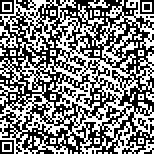| 本文已被:浏览 2825次 下载 2844次 |

码上扫一扫! |
|
|
| 西北太平洋柔鱼适宜栖息地动态变化研究 |
|
陆 尧1,2, 陈新军1,3,4,5,6, 汪金涛1,3,4,5,6, 余 景2
|
|
1.上海海洋大学海洋科学学院 上海 201306;2.中国水产科学研究院南海水产研究所 广州 510300;3.农业农村部大洋渔业开发重点实验室 上海 201306;4.国家远洋渔业工程技术研究中心 上海 201306;5.大洋渔业资源可持续开发教育部重点实验室 上海 201306;6.农业农村部大洋渔业资源环境科学观测实验站 上海 201306
|
|
| 摘要: |
| 柔鱼(Ommastrepes bartramii)是短生命周期种类,具有较高的经济价值和重要的生态地位,研究柔鱼资源对我国的远洋渔业发展有重要作用。本研究根据2005~2016年8~10月西北太平洋柔鱼渔业数据以及海表温度(Sea surface temperature, SST)数据,依据前人建立的柔鱼栖息地适宜性指数模型(Habitat suitability index, HSI)计算适宜柔鱼栖息地面积大小,并与柔鱼单位捕捞努力量渔获量(Catch per unit of fishing effort, CPUE)和渔获量进行相关性分析。研究发现,2015年平均适宜栖息地(HSI>0.6)面积范围最大,达到1087369 km2;2008年平均适宜栖息地面积范围最小,仅为 618407.5 km2。所选区域内适宜栖息地分布能有效反映柔鱼的资源分布情况,但其适宜栖息地面积大小与渔获量和CPUE之间不存在显著相关性(P>0.05)。其原因可能有:鱿钓渔船作业集中,导致单船渔获量不能表征实际CPUE;大尺度的气候变化,特别是厄尔尼诺和拉尼娜现象会影响柔鱼资源量;黑潮与亲潮的变化也会影响柔鱼资源量。 |
| 关键词: 西北太平洋 柔鱼 栖息地指数 |
| DOI:10.19663/j.issn2095-9869.20180613001 |
| 分类号: |
| 基金项目:海洋局公益性行业专项(20155014)、上海市科技创新行动计划(14DZ1205000)和国家自然科学青年基金(NFSC31702343)共同资助 |
|
| Dynamics of Suitable Habitat of Ommastrephes bartramii in the Northwest Pacific Ocean |
|
LU Yao1,2, CHEN Xinjun1,3,4,5,6, WANG Jintao1,3,4,5,6, YU Jing2
|
|
1.College of Marine Sciences, Shanghai Ocean University, Shanghai 201306;2.South China Sea Fisheries Research Institute, Chinese Academy of Fishery Sciences, Guangzhou 510300;3.Key Laboratory of Oceanic Fisheries Exploration, Ministry of Agriculture and Rural Affairs, Shanghai 201306;4.National Engineering Research Center for Oceanic Fisheries, Shanghai Ocean University, Shanghai 201306;5.Key Laboratory of Sustainable Exploitation of Oceanic Fisheries Resources, Ministry of Education, Shanghai Ocean University, Shanghai 201306;6.Scientific Observing and Experimental Station of Oceanic Fishery Resources, Ministry of Agriculture and Rural Affairs, Shanghai 201306
|
| Abstract: |
| Neon flying squid (Ommastrephes bartramii) is a short-lived species with high economic value and important ecological status. The study of squid resources plays an important role in the development of Chinese offshore fisheries. Based on the data from the Northwest Pacific squid fishery and sea surface temperature (SST) data from August to October of 20052016, and the habitat suitability index (HSI) model established by the predecessors, the size of the squid's habitat was correlated with catch per unit of fishing effort (CPUE) and the catch. We found that the average area of suitable habitat (HSI>0.6) was the largest in 2015, reaching 1,087,369 km2. In 2008, the average suitable habitat area was the smallest (618,407.5 km2). The suitable habitat distribution in the selected area can effectively reflect the resource distribution of the squid; however, there is no significant correlation between the size of the suitable habitat area and the catch and CPUE (P>0.05). The reasons may be as follows (1) the concentration of squid fishing vessels resulting in single-vessel catches that do not characterize the CPUE; (2) large-scale climate change, particularly El Niño and La Niña, affecting squid resources; (3) changes in Kuroshio and Tide also affect the amount of squid resources. |
| Key words: Northwest Pacific Ommastrepes bartramii Habitat suitable index |